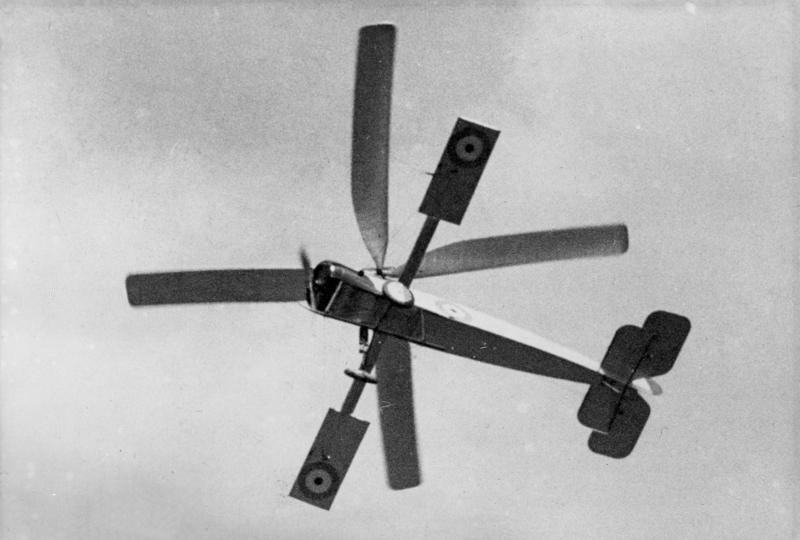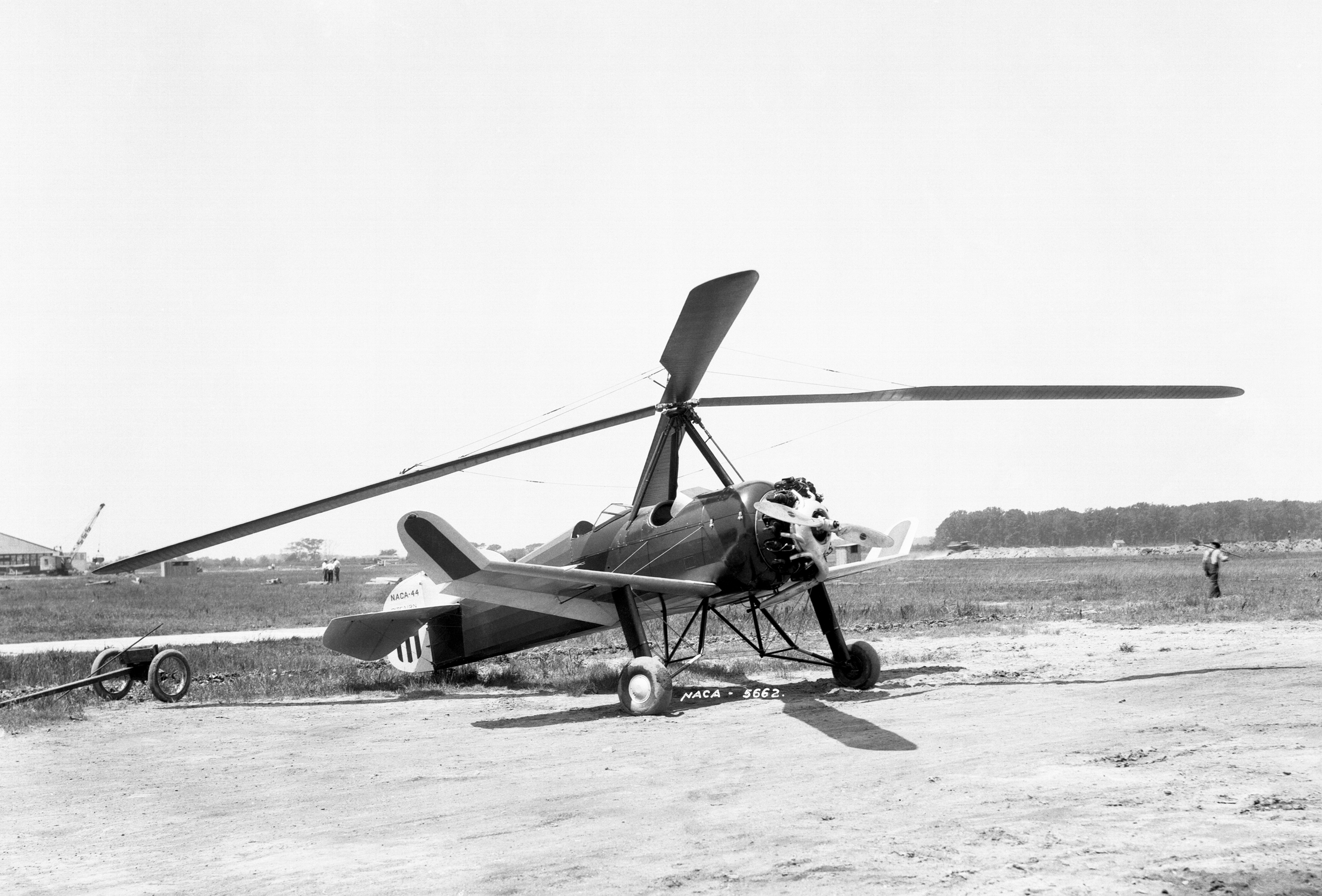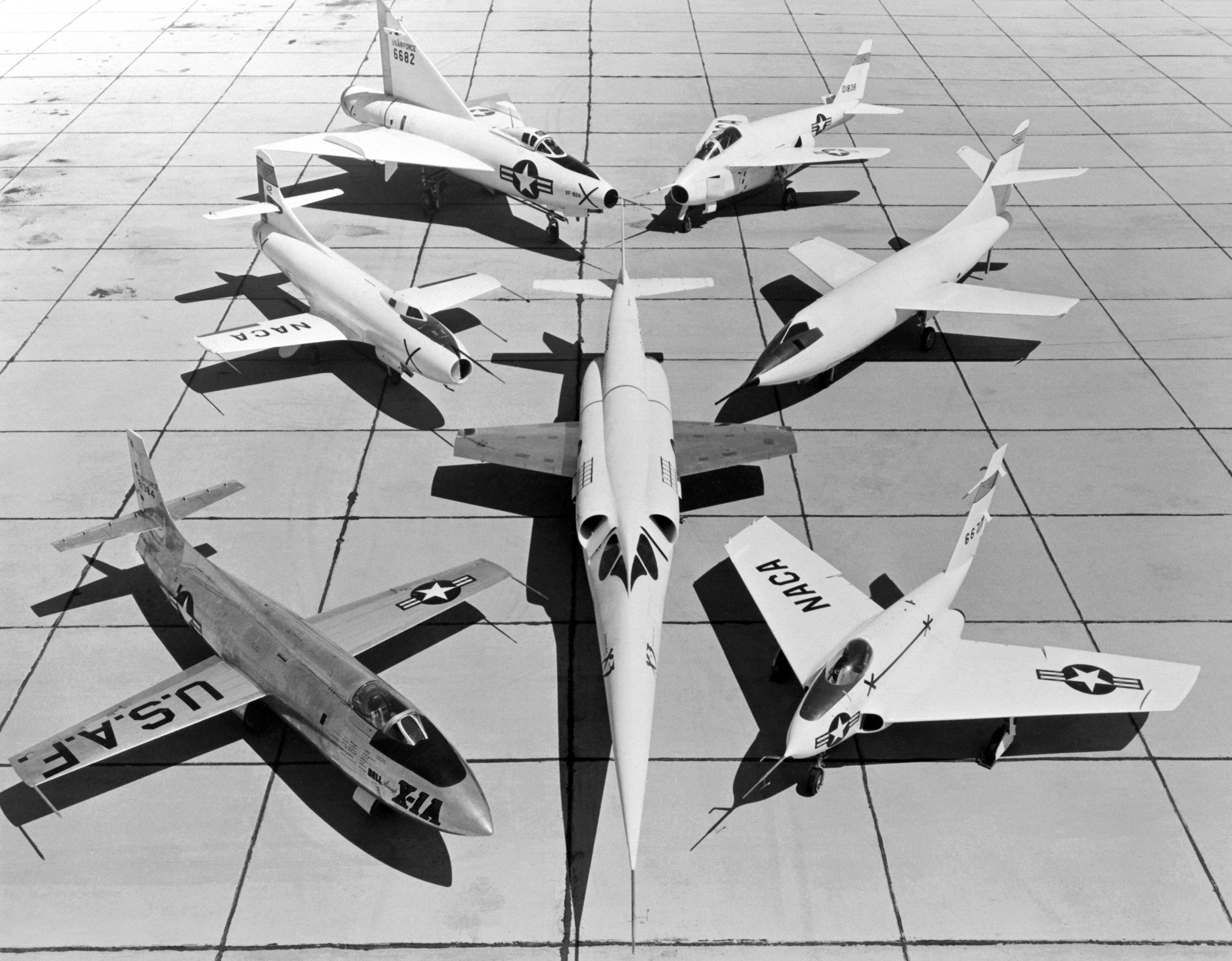|
Cierva C.6
The Cierva C.6 was the sixth autogyro designed by engineer Juan de la Cierva, and the first one to travel a "major" distance. Juan de la Cierva, 1st Count of la Cierva, Cierva, the engineer responsible for the invention of the autogyro, had spent all his funds on the research and creation of his first five prototypes. Therefore, in 1923, he turned to the Cuatro Vientos Aerodynamics Laboratory chief, Commander Emilio Herrera Linares, Emilio Herrera, who succeeded in persuading General Francisco Echagüe, the director of the Military Aviation Aeronautics Department, to take over the second stage in the research and development of Cierva's Autogyro, autogyros. After several wind tunnel tests, Military Aviation built a Cierva C.6 autogyro in an Avro 504 frame. This machine, piloted by Captain Joaquín Loriga Taboada, made three flights, all of them in March 1924. One of those flights, the eight-minute trip from Cuatro Vientos Airport, Cuatro Vientos airfield to Getafe airfield (), w ... [...More Info...] [...Related Items...] OR: [Wikipedia] [Google] [Baidu] |
Juan De La Cierva
Juan de la Cierva y Codorníu, 1st Count of la Cierva (; 21 September 1895 in Murcia, Spain – 9 December 1936 in Croydon, United Kingdom) was a Spanish civil engineer, pilot and a self taught aeronautical engineer. His most famous accomplishment was the invention in 1920 of a rotorcraft called ''Autogiro'',''Aero Digest'', Feb 1939, page 27 a single-rotor type of aircraft that came to be called autogyro in the English language. In 1923, after four years of experimentation, De la Cierva developed the articulated rotor, which resulted in the world's first successful flight of a stable rotary-wing aircraft, with his C.4 prototype. Early life Juan de la Cierva was born to a wealthy, aristocratic Spanish family, and for a time his father was the War Minister. At the age of eight he was spending his pocket money with his friends on experiments with gliders in one of his father's work sheds. In their teens they constructed an aeroplane from the wreckage they had bought from a Frenc ... [...More Info...] [...Related Items...] OR: [Wikipedia] [Google] [Baidu] |
Helicopter Rotor
A helicopter main rotor or rotor system is the combination of several rotary wings (rotor blades) with a control system, that generates the aerodynamic lift force that supports the weight of the helicopter, and the thrust that counteracts aerodynamic drag in forward flight. Each main rotor is mounted on a vertical mast over the top of the helicopter, as opposed to a helicopter tail rotor, which connects through a combination of drive shaft(s) and gearboxes along the tail boom. The blade pitch is typically controlled by the pilot using the helicopter flight controls. Helicopters are one example of rotary-wing aircraft (rotorcraft). The name is derived from the Greek words ''helix'', helik-, meaning spiral; and ''pteron'' meaning wing. Design principles Overview The helicopter rotor is powered by the engine, through the transmission, to the rotating mast. The mast is a cylindrical metal shaft that extends upward from—and is driven by—the transmission. At the top of the mast i ... [...More Info...] [...Related Items...] OR: [Wikipedia] [Google] [Baidu] |
Aircraft First Flown In 1924
An aircraft is a vehicle that is able to fly by gaining support from the air. It counters the force of gravity by using either static lift or by using the dynamic lift of an airfoil, or in a few cases the downward thrust from jet engines. Common examples of aircraft include airplanes, helicopters, airships (including blimps), gliders, paramotors, and hot air balloons. The human activity that surrounds aircraft is called ''aviation''. The science of aviation, including designing and building aircraft, is called ''aeronautics.'' Crewed aircraft are flown by an onboard pilot, but unmanned aerial vehicles may be remotely controlled or self-controlled by onboard computers. Aircraft may be classified by different criteria, such as lift type, aircraft propulsion, usage and others. History Flying model craft and stories of manned flight go back many centuries; however, the first manned ascent — and safe descent — in modern times took place by larger hot-air ball ... [...More Info...] [...Related Items...] OR: [Wikipedia] [Google] [Baidu] |
1920s Spanish Experimental Aircraft
Nineteen or 19 may refer to: * 19 (number), the natural number following 18 and preceding 20 * one of the years 19 BC, AD 19, 1919, 2019 Films * ''19'' (film), a 2001 Japanese film * ''Nineteen'' (film), a 1987 science fiction film Music * 19 (band), a Japanese pop music duo Albums * ''19'' (Adele album), 2008 * ''19'', a 2003 album by Alsou * ''19'', a 2006 album by Evan Yo * ''19'', a 2018 album by MHD * ''19'', one half of the double album ''63/19'' by Kool A.D. * ''Number Nineteen'', a 1971 album by American jazz pianist Mal Waldron * ''XIX'' (EP), a 2019 EP by 1the9 Songs * "19" (song), a 1985 song by British musician Paul Hardcastle. * "Nineteen", a song by Bad4Good from the 1992 album '' Refugee'' * "Nineteen", a song by Karma to Burn from the 2001 album ''Almost Heathen''. * "Nineteen" (song), a 2007 song by American singer Billy Ray Cyrus. * "Nineteen", a song by Tegan and Sara from the 2007 album '' The Con''. * "XIX" (song), a 2014 song by Slipknot. ... [...More Info...] [...Related Items...] OR: [Wikipedia] [Google] [Baidu] |
List Of Experimental Aircraft
As used here, an experimental or research and development aircraft, sometimes also called an X-plane, is one which is designed or substantially adapted to investigate novel flight technologies. Argentina * FMA I.Ae. 37 glider – testbed for production fighter Australia * GAF Pika – manned test craft for drone program Brazil * Baumgartl PB-60 – towed experimental rotor kite Canada *AEA Silver Dart (1909) – First aircraft to fly in Canada *Avro Canada Avrocar – Ducted fan VTOL * Birdman Project 102 – * Canadair CL-52 – jet engine testbed (converted Boeing B-47) * Canadair CL-84 Dynavert – tilt-wing VTOL * de Havilland Canada C-8A – Quiet Short-Haul Research Aircraft * de Havilland Canada C-8A – Air-Cushion Landing System * de Havilland Canada C-8A – Augmentor Wing *Marsden Gemini – variable-geometry glider *NRC tailless glider – tailless flying wing *UTIAS Ornithopter No.1 France * Aérocentre NC.130 1939 – High-altitude flight * Aérospatiale Lu ... [...More Info...] [...Related Items...] OR: [Wikipedia] [Google] [Baidu] |
Clerget 9B
The Clerget 9B was a nine-cylinder rotary aircraft engine of the World War I era designed by Pierre Clerget. Manufactured in both France and Great Britain (Gwynnes Limited), it was used on such aircraft as the Sopwith Camel. The Clerget 9Bf was an increased stroke version.Lumsden 2003, p. 133. Variants ;Clerget 9B (1913) 130 hp (97 kW). 1,300 produced by Ruston Proctor & Co Ltd of Lincoln ;Clerget 9Bf (1915) 140 hp (104 kW). Extended stroke (172 mm (6.75 in)) version, increasing capacity to 17.5 L (1,066.5 cu in). 1,750 produced by Gwynnes Limited and 600 produced by Ruston Proctor. Applications Clerget 9B * Armstrong Whitworth F.K.10 *Avro 504 *Avro 531 * Bristol M.1 *Cierva C.6 * Cierva C.8 * Fairey Hamble Baby *FBA Type C * Nieuport 12 *Nieuport 17bis *Sopwith Baby *Sopwith Camel *Sopwith Scooter *Sopwith Triplane * Sopwith 1½ Strutter Clerget 9Bf *Sopwith Camel Engines on display *A preserved Clerget 9B engine is on public display at ... [...More Info...] [...Related Items...] OR: [Wikipedia] [Google] [Baidu] |
Madrid
Madrid ( , ) is the capital and most populous city of Spain. The city has almost 3.4 million inhabitants and a metropolitan area population of approximately 6.7 million. It is the second-largest city in the European Union (EU), and its monocentric metropolitan area is the third-largest in the EU.United Nations Department of Economic and Social AffairWorld Urbanization Prospects (2007 revision), (United Nations, 2008), Table A.12. Data for 2007. The municipality covers geographical area. Madrid lies on the River Manzanares in the central part of the Iberian Peninsula. Capital city of both Spain (almost without interruption since 1561) and the surrounding autonomous community of Madrid (since 1983), it is also the political, economic and cultural centre of the country. The city is situated on an elevated plain about from the closest seaside location. The climate of Madrid features hot summers and cool winters. The Madrid urban agglomeration has the second-large ... [...More Info...] [...Related Items...] OR: [Wikipedia] [Google] [Baidu] |
Museo Del Aire (Spain)
Museum of Aeronautics and Astronautics ( es, Museo de Aeronáutica y Astronáutica), also known as Air Museum (), is an aviation museum located near of Madrid, is situated at Cuatro Vientos Air Base, Spain. The objective of the museum is to acquire, conserve and display the aircraft, equipment and associated paraphernalia that constitute the historical heritage of the Spanish Air Force. It has an exterior exhibition and seven hangars. History In 1939 the Spanish Civil War came to an end and the Spanish Air Force was created. It is in this period the Ministry of the Air () appointed Colonel Társilo Ugarte Fernández to prepare a project for the creation of an aeronautic museum. However, 27 years passed before its creation. A first draft was presented in December 1948, with its location in the plant below the new building of the Ministry of the Air. Through subsequent studies and consults, the Museum of Aeronautics and Astronautics was created by decree number 1437 of June 16, 1 ... [...More Info...] [...Related Items...] OR: [Wikipedia] [Google] [Baidu] |
World's Fair
A world's fair, also known as a universal exhibition or an expo, is a large international exhibition designed to showcase the achievements of nations. These exhibitions vary in character and are held in different parts of the world at a specific site for a period of time, typically between three and six months. The term "world's fair" is commonly used in the United States, while the French term, ("universal exhibition") is used in most of Europe and Asia; other terms include World Expo or Specialised Expo, with the word expo used for various types of exhibitions since at least 1958. Since the adoption of the 1928 Convention Relating to International Exhibitions, the Paris-based Bureau International des Expositions has served as an international sanctioning body for international exhibitions; four types of international exhibition are organised under its auspices: World Expos, Specialised Expos, Horticultural Expos (regulated by the International Association of Horticultural ... [...More Info...] [...Related Items...] OR: [Wikipedia] [Google] [Baidu] |
Seville Expo '92
The Seville Expo '92 was a universal exposition that took place from Monday, April 20 to Monday, October 12, 1992, on La Isla de La Cartuja (Charterhouse Island), Seville, Spain. The theme for the expo was "The Age of Discovery", celebrating the 500th anniversary of Christopher Columbus reaching the Americas after launching from Seville's port (on the Guadalquivir), and over 100 countries were represented. The total amount of land used for the expo was and the total number of visitors was 41,814,571. The exposition ran at the same time as the smaller and shorter-duration Genoa Expo '92, a Specialized Exhibition, held in memory of Christopher Columbus, born in Genoa. Joint exposition proposal with Chicago Expo'92 was organized to celebrate the 500th anniversary of the discovery of the Americas by Christopher Columbus (1492-1992). The exposition was to be jointly held with the City of Chicago, however, due to national, state, and local funding difficulties, Chicago did not accept ... [...More Info...] [...Related Items...] OR: [Wikipedia] [Google] [Baidu] |







